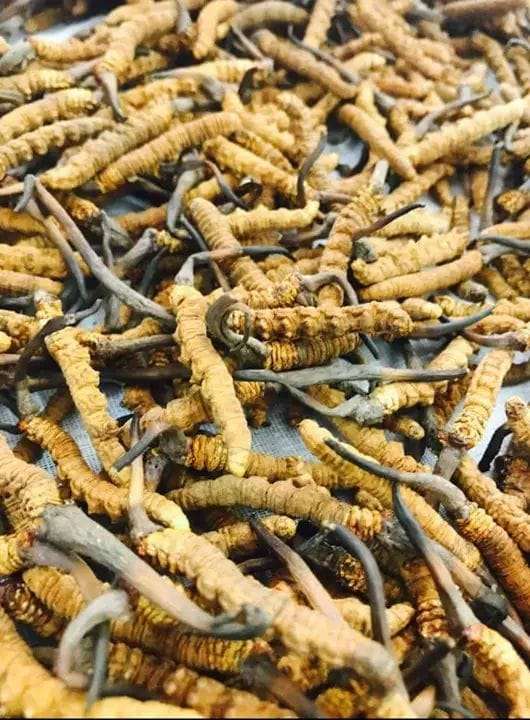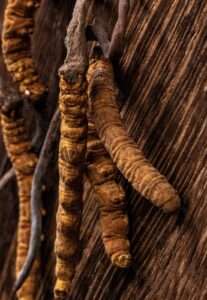
The Unknown Story of Cordyceps sinensis – Fascinating Himalayan Fungi.
Along the Alpine slope in the snow-covered mountains, an ecosystem of ghost moths continues to thrive. They are a small, yellow, moth species that only live for 2-5 days.
While these fluffy insects are a pleasant sight most of their larvae never survive to become moths. Instead, their life cycle takes a complete U-turn forcing them to shift kingdom.
Being subterranean, the larvae of ghost moths spend most of their lifetime underground. With the start of spring, as the snow starts to melt making the climate warm and favorable, these larvae wriggle out on the forest floor. The air outside is thick with the spores of Cordyceps which end up depositing in the soft head of the larvae.
The fungal spores in the head slowly make its way inside the body and consume every internal organ except the exoskeleton. This is how the transition from animal life to plant life happens.
This fungal larvae lives under the forest floor for a very long period remaining dormant. Again in the following spring, the growth of a tiny slender mushroom takes place from the head of the larvae which is indeed the rare herb, Cordyceps sinensis.
They have a dark brown larvae body with creamy white fungal stalks which can grow up to 12 cm in length and 0.4cm in girth. The maturity of Cordyceps sinensis is indicated by the growth of sprouts at the top which contain thousands of fungal spores ready to burst out and deposit on larval heads to start a new cycle.
It is known that there are more than 350 types of so-called Cordyceps or their substitute having similar medicinal values, discovered worldwide. Besides ghost moths, larvae of various other moths and butterflies are also prone to fungal infection.
This natural phenomenon creates a special being that lives both as an animal and a plant. An exceptional exception like this in our perfectly balanced nature is bound to possess qualities unlike any.
Cordyceps sinensis boasts huge medicinal importance. The chemical components in them are known to cure numerous ailments. In an attempt to utilize the myriad health benefits provided by Cordyceps sinensis, the trend of growing it artificially is also being practiced. Not only that, introducing it in medicines, tea, beverage and supplements is encouraged to share its bioactive components worldwide.




